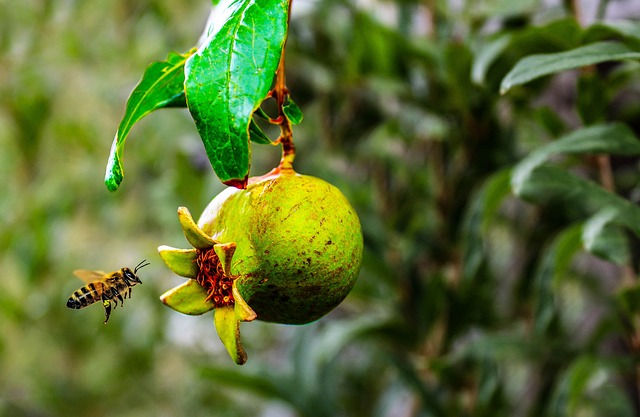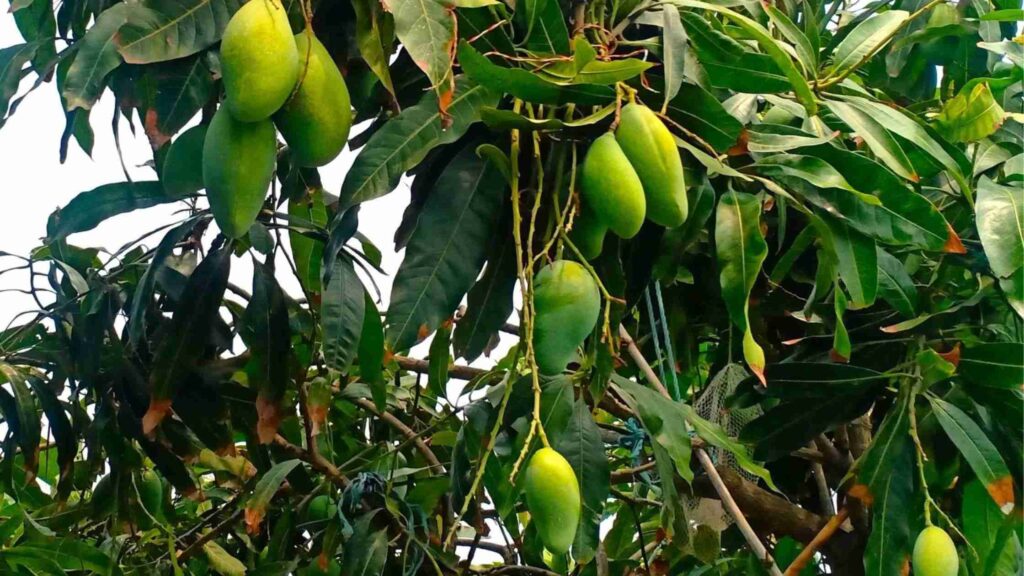The flower is not coming to your pomegranate tree yet. Flowers are falling off, the tree is not growing properly, and black spots on the fruit have been arising we will find the answers to all the questions. We will Discover why pomegranate fruit flowers fall prematurely to Learn about common causes, and care tips and ensure a healthy fruiting process! In this regard, I know a few basic things about pomegranate cultivation that I am sharing for your necessary consideration:
Grafted Pomegranate Plant

Pomegranate trees bear blossoms for practically the whole year. But from the start of spring until the monsoon, more flowers are produced. Usually, pomegranates take six to seven months to fully ripen. Pomegranates grow quite well in group gardens and are very easy to cultivate. You will soon require a nice kind of grafted tree if you visit a good pomegranate. After planting, appropriate maintenance must be performed. the creation of soil, the choice of tub, sufficient lighting, air on the tree providing wholesome food, or stopping disease outbreaks. This issue deserves special attention because we are growing pomegranates in the Roof Garden.
Cutting Extra Branches

The overgrowth of the pomegranate tree needs to be pruned. I trimmed the taller branches moderately. Pomegranate blossoms originate from both young and mature branches. During that time, I applied foods high in potassium and phosphorus. Additionally, I placed nitrogen-rich fertilizers near the tree’s base.
It is recommended to apply Plant Growth Regulators (PGR) such as Miraculin, Planophics, Flora, or Booster Two, available at your local store. Spray the PGR on the flowers two to three times, with intervals of eight to twelve days between applications.
Plucking the First Flower
New flower bunches start to emerge as time passes. I took off the early blooms from the plant. Pomegranate trees bloom twice a year, with male blooms usually appearing first. There are more female blossoms on the tree as it gets older. Female flowers on immature plants frequently fall off since the plant is not yet developed enough to support fruiting.
Mixing the Chemical Fertilizer

Regularly replenishing the soil with new fertilizer is necessary. This can be laborious when planting trees in big pots, such as half-drums. In these situations, I excavated a portion of the tree’s base and replaced it with fresh, fertilizer-infused soil.
Even fully-grown plants occasionally undergo underdeveloped fruit, female flower drop, or fruit drop. The main cause of this is the soil’s deficiency in nutrients. I applied a balanced fertilizer that included potassium, calcium, magnesium, nitrogen, and zinc at the base of the plant as the flowers began to bloom.
Micronutrients have to be given to the plant as well. To address nutrient deficiencies, I mixed 1 gram of zinc with 2 grams of an appropriate supplement and sprayed it on the plant 2 to 3 times at 15-day intervals.
Fruit cracking is a significant issue in pomegranate trees, typically caused by nutrient deficiencies rather than fungal diseases. Specifically, a lack of calcium and boron can lead to this problem. I ensured these nutrients were included when fertilizing the plants to prevent fruit cracking.
Overwatering or Less Watering
On the other hand, if there is too much or too little water in the soil when the plant is in flower, the flower may drop off. In addition, insect attacks and fungus attacks can cause flowers to drop.
Lack of Pollination

Pomegranate flowers can self-pollinate and cross-pollination may occur by insects may occur. If for some reason pollination does not occur, the female flowers may also drop off. To solve this problem, we can plant 3 or 4 Pomegranate trees in the same place.
Repotting the Pomegranate Tree
PGR not only brings flowers to the flowers as well as the female flowers increase. If a tree has been in the same place for several years and has not been reported for many days it is better to report the tree once. This time no roots can be trimmed.



